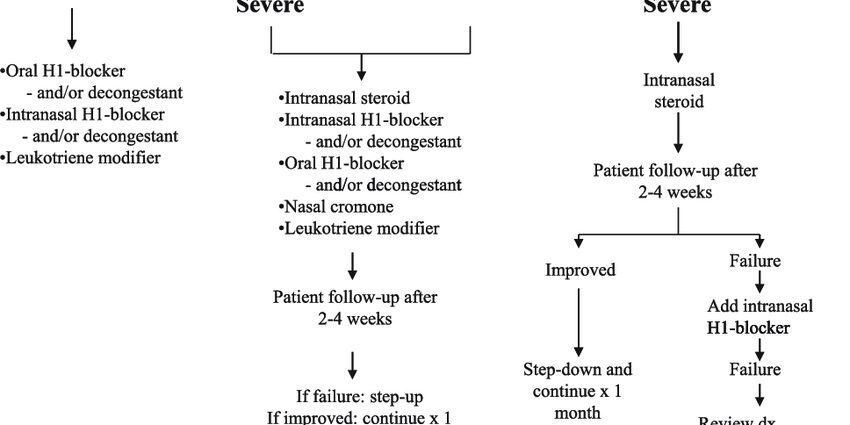Contents
- What is the definition of allergic rhinitis, commonly known as hay fever, in children?
- What are the symptoms ?
- How to differentiate a simple cold from a rhinitis?
- At what age is the child most susceptible to allergic rhinitis? Can a baby be touched?
- Antihistamine, nasal corticosteroid … how to treat allergic rhinitis in children? What are the existing treatments?
But why is your child constantly complaining about having runny nose and itchy eyes ? Perhaps quite simply because he is affected, like 35% of French people (Inserm 2020) by allergic rhinitis. A disease which, if it does not appear not too mean at first, maybe very disabling on a daily basis. But effective treatments exist, as well as some tips to avoid it.
What is the definition of allergic rhinitis, commonly known as hay fever, in children?
Rhinitis, first of all, is inflammation of the nose. The term allergic, in turn, specifies the mechanism of onset of rhinitis, related to exposure to an allergen, identified or not. There are seasonal rhinitis (hay fever), which appear at certain times of the year when the child is exposed to allergens in the environment. From February to April, it will be fairly classically the pollens of trees, from May to July those of grasses (wheat, corn…) then until October those of herbaceous plants (prairie grasses, hay, turf, editor’s note). Then there is peranual allergic rhinitis, that is to say that will last all year. This happens to children who have atopy (hypersensitivity linked to the environment of genetic origin, editor’s note) and are polysensitized, with persistent discomfort over the long term. A dust mite allergy is a classic. The child is exposed to it almost permanently. There is also animal hair, and particularly that of cats or certain products of the domestic environment such as green plants. Moisture with the appearance of mold and passive smoking can also be the causes.
What are the symptoms ?
The symptoms are manifold. Often we find tearing or swelling of the eyes, a runny or stuffy nose. On the other hand, there is never fever. But this can be very disabling and create a sleep disorder, or even cause repeated absences from school.
A very disabling disease in children
We tend to minimize the impact that rhinitis can have on a child. However, a recent study has shown that rhinitis can have a huge impact on the daily life of the child, on his quality of life. The study thus demonstrated that rhinitis was even more disabling for a child on a daily basis than diabetes.
How to differentiate a simple cold from a rhinitis?
This is generally the question that parents ask themselves. You have to get help from a health professional, of course, but parents can start to sketch out an answer. if the symptoms are intractable and persistent, if they always resurface in the same season. A cold usually goes away after 5-7 days. If it lasts over time, then you have to ask yourself questions. Is it because of the cat? Is my house humid? In short, sift through all the triggering factors.
At what age is the child most susceptible to allergic rhinitis? Can a baby be touched?
Allergic rhinitis is very rare in babies, unless he has atopy. We notice allergic rhinitis from the age of 5 years, but they are especially pregnant in adolescence, during puberty in particular. According to an Inserm study dating from 2020, 20% of children over 9 are affected by the risk of allergies.
Allergic rhinitis: the impact of global warming
At first glance, the link between global warming and rhinitis is not obvious. “With the warming, we realize that the frequency of pollen emissions changes year after year,” explains the pediatrician. Thus, a Swiss study has shown that the pollination of hazelnuts takes place more and more early. “
Antihistamine, nasal corticosteroid … how to treat allergic rhinitis in children? What are the existing treatments?
Relying on an allergist is essential, it is necessary a medical consultation. First of all to identify the allergen or allergens involved, with skin tests. The best treatment is to remove the allergen. Much progress has been made on desensitization using immunotherapies. Immunotherapies are performed with subcutaneous injections, which often prove to be effective. But you have to be patient, because they only pay off in the long term.
Then, of course, there are proven drugs. The latest generations of antihistamines are interesting and are prescribed by the doctor once a day. Nasal corticosteroids (sprays, editor’s note). also work well. The corticosteroid is an anti-inflammatory, and will therefore have good local efficacy. For the eyes, you can put anti-inflammatory drops.
Some tips to avoid exposure to allergens
– Wash your hands and face regularly.
– Do not put your laundry to dry outside.
– Air the rooms daily (preferably early in the morning or late in the evening)
– Clean as often as possible
– Buy an anti-dust mite duvet or cover
* Author of “My child is sick. What do I do ?” (Editions Eyrolles)










